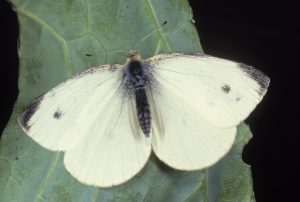Welcome back to our monthly blog in which we discuss a few interesting facts about butterflies in general and a specific type of butterfly each month, focusing on the cabbage white this October.
Butterflies are harmless to other animals and have no active way of defending themselves. They are therefore low on the food chain and have many predators. They do however have some strategies to protect themselves from becoming a meal such as hiding in leafy habitats, camouflage coloration, toxicity, and speed.
Eggs and Larvae are mostly at risk from parasites such a certain wasps, which lay their eggs inside butterfly larvae to have their pupae eat the Butterfly larvae from the inside out. It is estimated that only 1-5% of all eggs, larvae and pupae survive to become butterflies.
Adult butterflies are food for many birds, lizards, mantises, wasps, fire ants and spiders. But their biggest predators are humans! Habitat destruction and pesticides may kill more butterflies than all other predators combined. So if you love butterflies be an active protector instead of a predator; create habitats, limit your use of pesticides whenever possible and encourage others to do the same.
The Cabbage White
The cabbage white is a small butterfly, 1.3-2” wide, which resides in North Florida year-round but is most seen in spring and summer in open fields, parks, and vegetable plots. They are white in color with grey edges on their fore wing tips. Males have one black spot on the topside, females two.
They are often considered an agricultural pest because their hostplants are in the brassica family such as cabbage, broccoli, and mustards. Their larvae are commonly known as cabbage worms, small and green with 5 longitudinal yellow stripes and very hard to detect. An infestation can decimate a field of cabbage in days. However, in the home garden, floating row covers can greatly reduce the risk without the use of pesticides.

Please join us again next month when we will discuss butterfly predators in general and the, love ‘m or hate ‘m, cabbage white butterfly in particular.
For additional information please visit
https://gardeningsolutions.ifas.ufl.edu/design/types-of-gardens/butterflygardens.html
This blog was written by Carin Ashman, a UF/IFAS Extension Master Gardener Volunteer in Clay County.
 1
1
